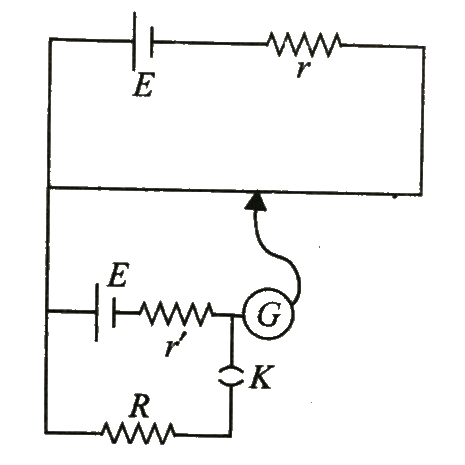When the action potential begins, sodium gates open, allowing to cross the membrane. Now the polarity changes to:
negative outside and positive inside
positive outside and negative inside
there is no difference in charge between outside and inside
any one of the above could be correct
The correct Answer is:A
Step-by-Step Solution:
1. Understanding Resting Potential:
- At rest, a neuron has a resting potential where the inside of the membrane is negatively charged compared to the outside. This is primarily due to a higher concentration of potassium ions (K+) inside the cell and a higher concentration of sodium ions (Na+) outside the cell.
2. Initiation of Action Potential:
- When a neuron is stimulated, voltage-gated sodium channels open. This allows sodium ions (Na+) to flow into the neuron.
3. Change in Membrane Polarity:
- As sodium ions enter the neuron, the inside of the membrane becomes positively charged relative to the outside. This change in charge is referred to as depolarization.
4. Polarity During Action Potential:
- At the peak of the action potential, the inside of the neuron is now positively charged, while the outside is negatively charged. Therefore, the polarity changes to negative outside and positive inside.
5. Conclusion:
- The correct answer to the question is that when the action potential begins, the polarity changes to negative outside and positive inside.
- At rest, a neuron has a resting potential where the inside of the membrane is negatively charged compared to the outside. This is primarily due to a higher concentration of potassium ions (K+) inside the cell and a higher concentration of sodium ions (Na+) outside the cell.
- When a neuron is stimulated, voltage-gated sodium channels open. This allows sodium ions (Na+) to flow into the neuron.
- As sodium ions enter the neuron, the inside of the membrane becomes positively charged relative to the outside. This change in charge is referred to as depolarization.
- At the peak of the action potential, the inside of the neuron is now positively charged, while the outside is negatively charged. Therefore, the polarity changes to negative outside and positive inside.
- The correct answer to the question is that when the action potential begins, the polarity changes to negative outside and positive inside.
Topper's Solved these Questions
- NEURAL CONTROL AND CO-ORDINATION BOOK - ICSECHAPTER - NEURAL CONTROL AND CO-ORDINATION EXERCISE - TEST YOUR PROGRESS ( OBJECTIVE TYPE QUESTIONS ) (Fill in the blanks with appropriate words.)
14 Videos
- NEURAL CONTROL AND CO-ORDINATION BOOK - ICSECHAPTER - NEURAL CONTROL AND CO-ORDINATION EXERCISE - TEST YOUR PROGRESS ( OBJECTIVE TYPE QUESTIONS ) (State whether the following statements are true or false .)
9 Videos
- MORPHOLOGY OF FLOWERING PLANTS BOOK - ICSECHAPTER - MORPHOLOGY OF FLOWERING PLANTS EXERCISE - NCERT TEXTBOOK QUESTIONS WITH SOLUTIONS
25 Videos
- NEURAL CONTROL AND COORDINATIONBOOK - ICSECHAPTER - NEURAL CONTROL AND COORDINATIONEXERCISE - (Review question) long answer
20 Videos
Similar Questions
The action potential in a neuron is a brief change in
View SolutionRead the following statements, A.)Action potential propagates across the neuronal membrane B) Repolarisation decreases the responsiveness of neuronal membrane to further stimulus C) At resting stage, neuronal membrane is negatively charged on the inside and positively charged on the outside. D) For every 2Na+ ions which are transported inside the cell, Na+−K+ pump transports 3K+ ions to outside,Choose the option which includes correct statements only,
View Solution
Knowledge Check
Action potentials occur when :
AA) a neuron receives adequate stimulationBB) sodium gates open in an ever accelerating wayCC) sodium-potassium pumps kick into actionDD) both (a) and (b)A list of events occurring in the transmission of nerve impulse across the synapse is given below in a random order
(i)Opening of specific ion channels allows the entry of ions, a new action potential is generated in the post-synaptic neuron.
(ii)Neurotransmitter binds to the receptor on post synaptic membrane.
(iii)Synaptic vesicle fuses with pre-synaptic membrane, neurotransmitter release into synaptic cleft.
(iv)Depolarisation of pre-synaptic membrane.
(v)Arrival of action potential at axon terminal.
Which of the following options represents these events in a correct order ?A(v)→(iv)→(iii)→(ii)→(i)B(i)→(ii)→(iii)→(iv)→(v)C(i)→(ii)→(iv)→(iii)→(v)D(v)→(iv)→(iii)→(i)→(ii)
The potential energy of a particle is determined by the expression U=α(x2+y2), where α is a positive constant. The particle begins to move from a point with coordinates (3,3), only under the action of potential field force. Then its kinetic energy T at the instant when the particle is at a point with the coordinates (1,1) is
View SolutionAn action potential is initiated each time the membrane potential is raised to .............. potential.
View SolutionMechanism of vision includes following steps in random order
A. Generates action potential in ganglionic cells through the bipolar cells.
B. Membrane permeabilities of rods and cones change.
C. Light induces dissociation of retinal from opsin.
D. Activation of photopigment of rods and cones.
E. Light rays focussed on the retina.
F. Potential differences generated in photoreceptor cells.
G. Image formed on retina is recognized by the brain.
H. Action potentials are transmitted by optic nerve to the visual cortex of brain.
The correct sequence is
View SolutionWhen the SA node generates an action potential it stimulates the atrial systole , which results in
View SolutionThe circuit shows in Fig . 6.33 shows the use of potentiometer to measure the internal resistance of a cell.
(a) When the key is open, how does the balance point change, if the driver cell decreases ?
(b) When the key is closed, how does the balance point change, if R is increased, keeping the current from the driver cell constant ?

View SolutionResting membrane potential and Action potential
View Solution
